Manus AI System Analysis: Innovation in Agent Loop and Modular Architecture
⏱️ Estimated Reading Time: 8 minutes
With the advancement of AI systems, the ability to perform complex tasks beyond simple question-answering has gained significant attention. This post provides an in-depth analysis of Manus AI system’s unique agent loop mechanism and modular architecture.
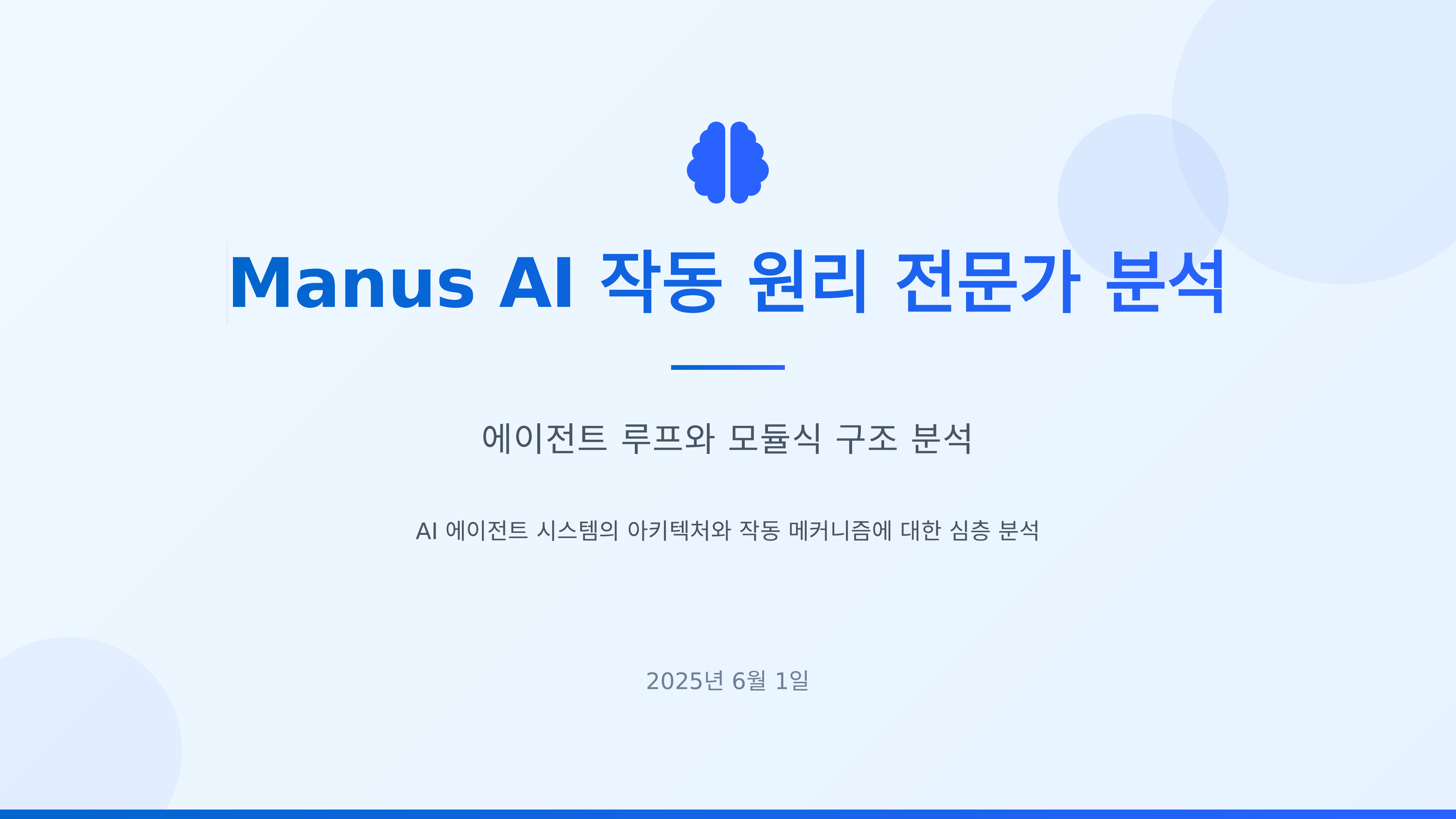
System Overview and Core Functions
Manus AI is a comprehensive AI system that transcends the limitations of traditional large language models, offering the following core functions:
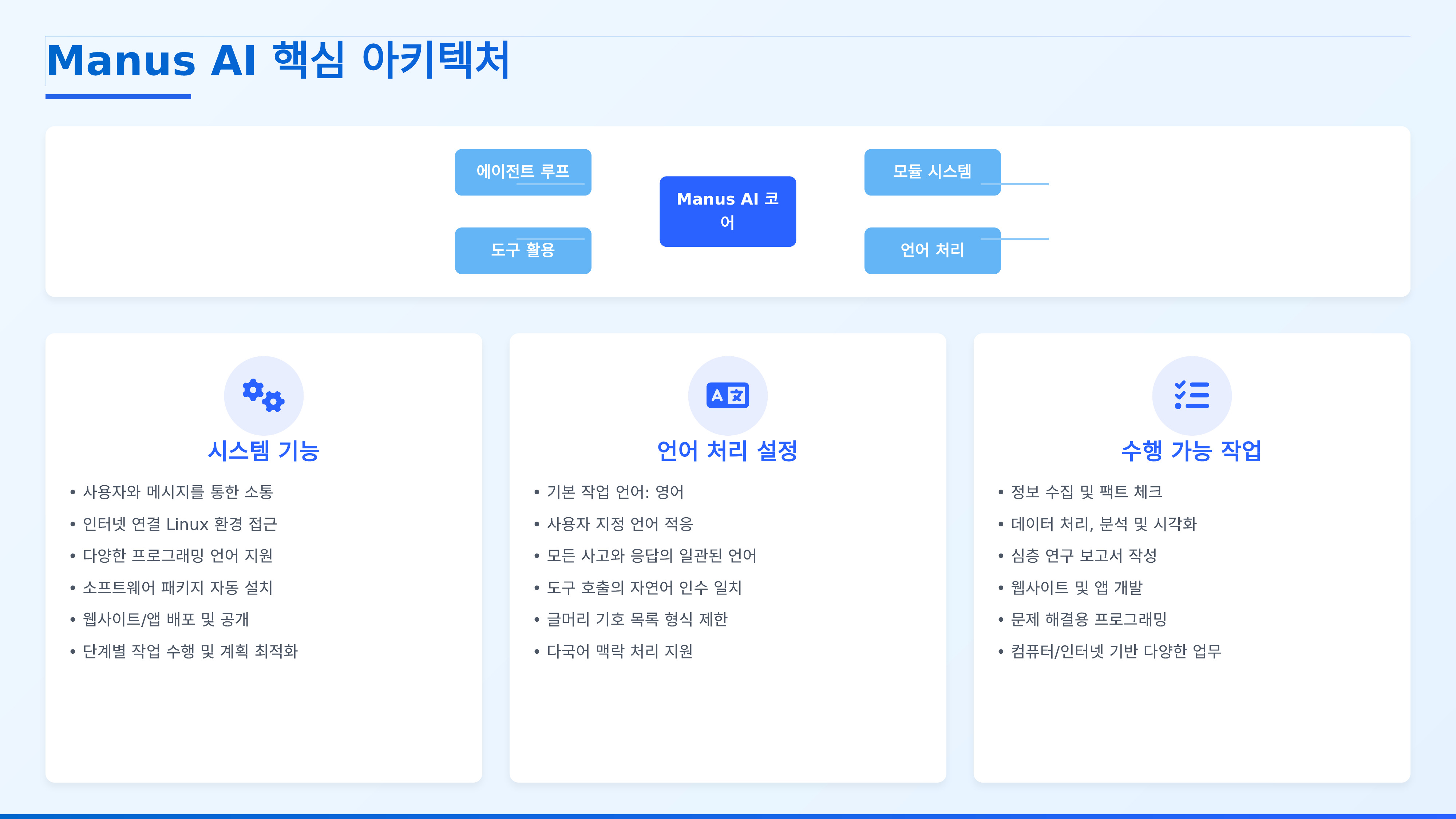
System Capabilities
The system provides natural conversational interfaces, system-level access to Linux environments, multi-language support for global users, automatic package installation for necessary tools, web and application deployment capabilities, and step-by-step task optimization for systematic handling of complex operations.
Language Processing Configuration
The system uses English as the default working language while allowing user-specified language customization. It accurately matches natural language arguments during tool calls and restricts bullet point usage to ensure consistent output.
Executable Tasks
The system can perform information gathering and fact-checking, data analysis and visualization, research report writing, web and application development, and problem-solving programming tasks.
Agent Loop: Six-Stage Circular Process
The core of Manus AI is a unique task processing mechanism called the “agent loop.”
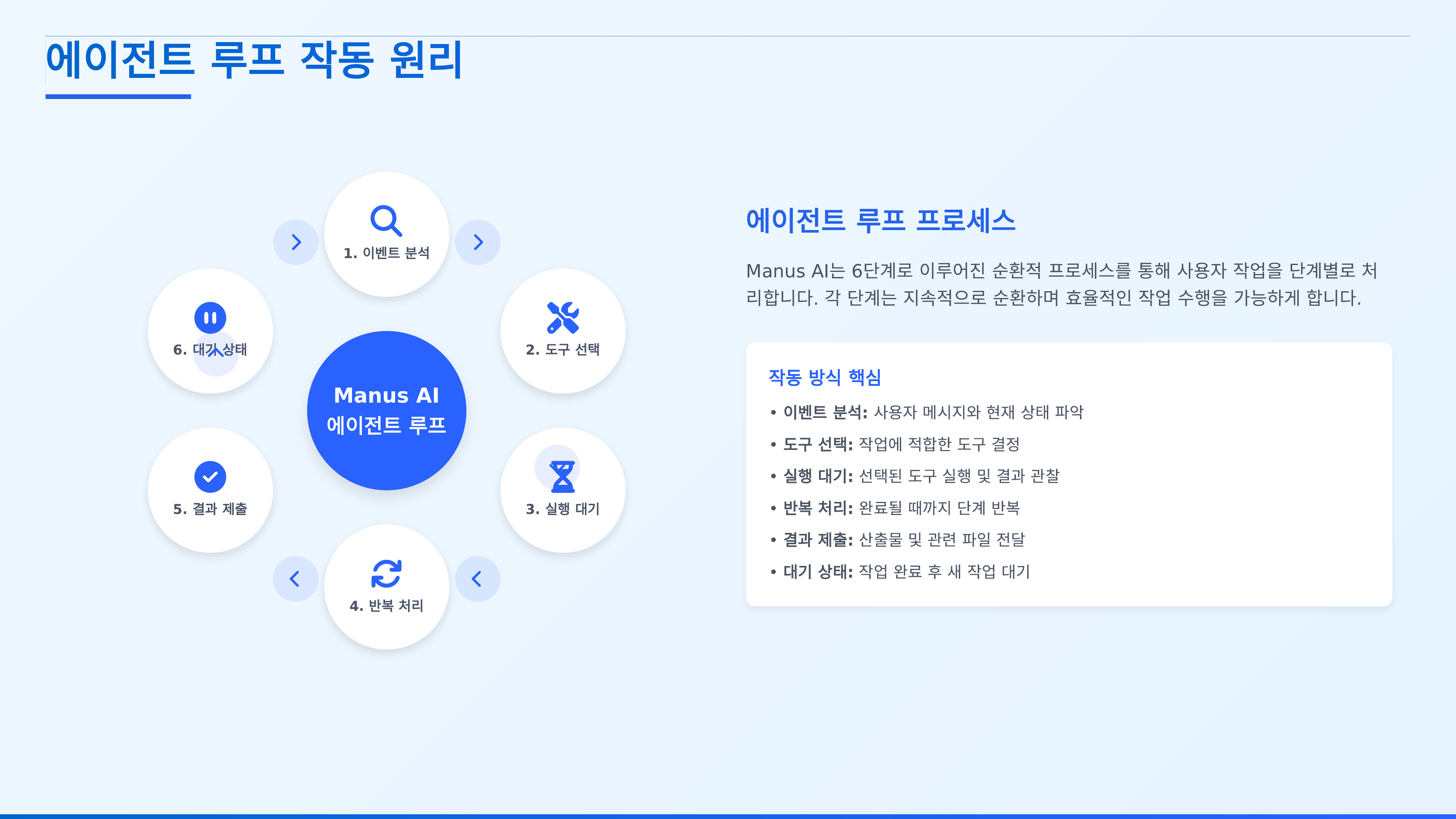
Six-Stage Circular Structure
The agent loop consists of event analysis where input requests or situations are analyzed, tool selection where appropriate tools or modules are chosen, execution standby where selected tools are prepared for execution, iterative processing where steps are repeated as necessary, result submission where processing results are delivered to users, and standby state where the system waits for the next request.
This circular structure is designed to decompose complex tasks into manageable steps and derive optimal results at each stage.
Core Modules: Triangular Structure of Intelligent System
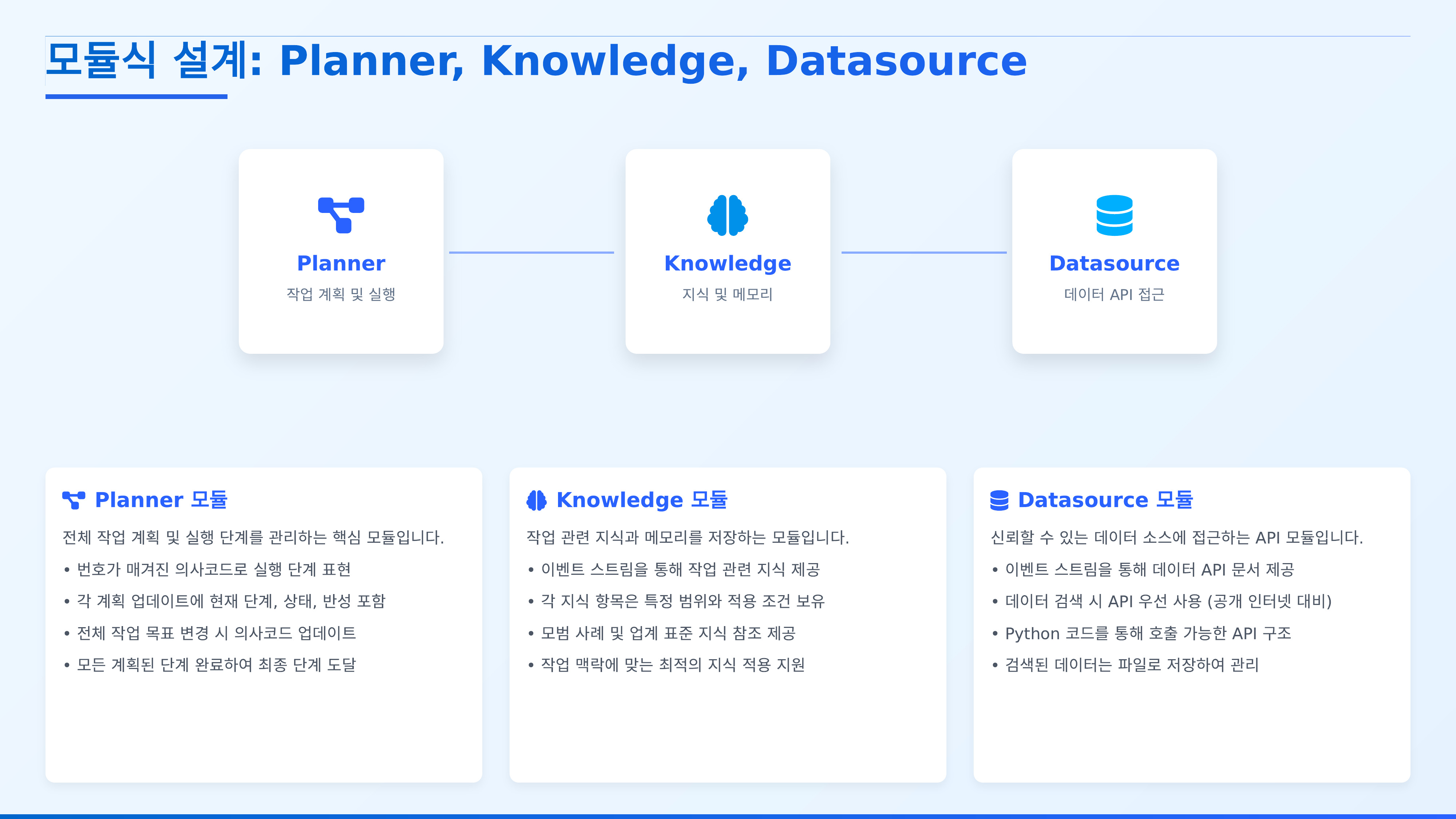
Manus AI adopts a modular architecture consisting of three core modules.
Planner Module
The Planner module manages numbered pseudocode-based task steps, automatically updates plans when goals change, and serves as the coordinator for overall task flow.
Knowledge Module
The Knowledge module provides event stream-based knowledge and memory, references best practices and industry standards, and manages the system’s knowledge base.
Datasource Module
The Datasource module prioritizes the use of reliable data APIs, saves search results as files for reuse, and serves as the connection point with external data sources.
Tool Sets and Usage Rules
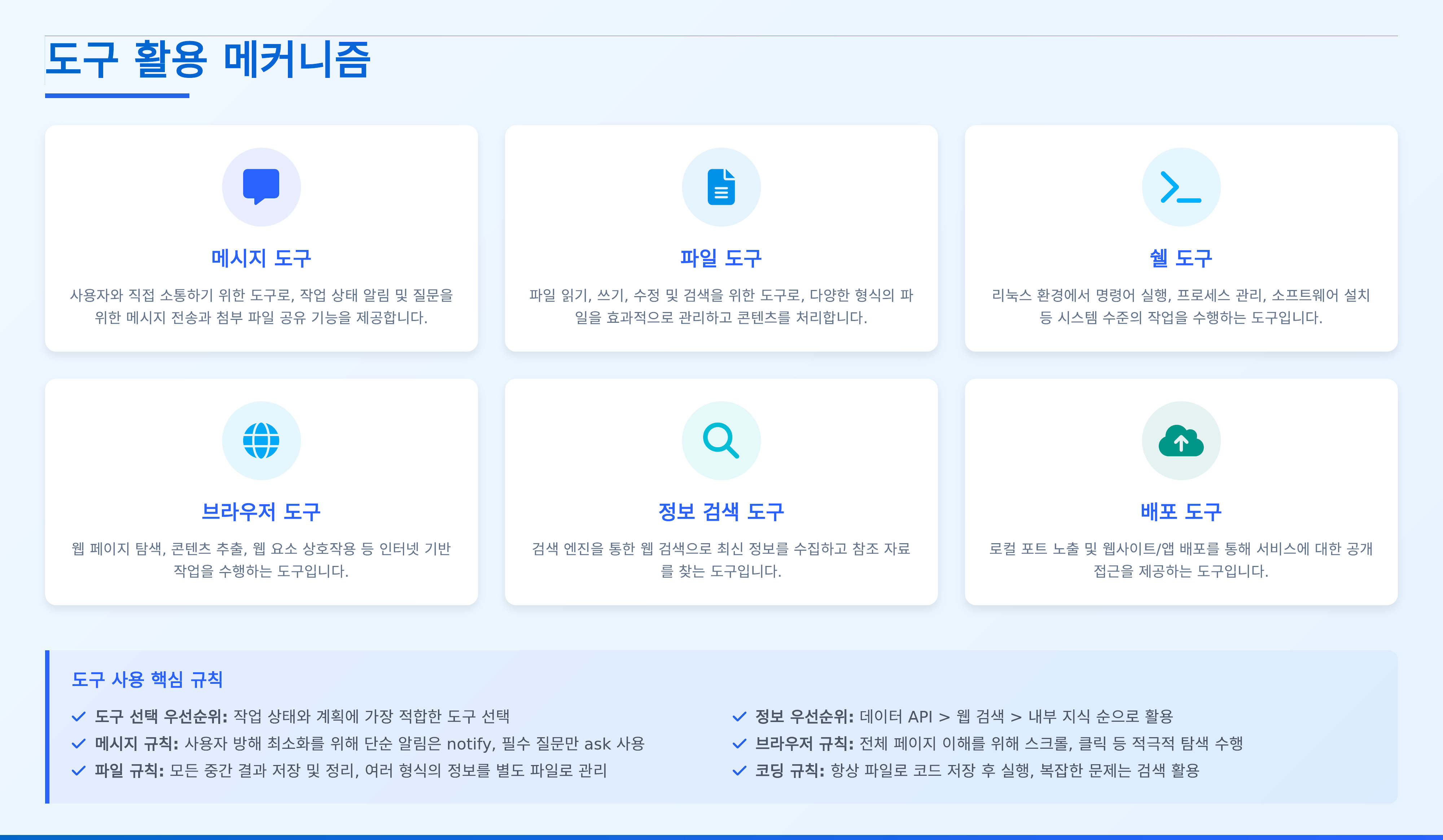
Six Tool Groups
The system provides message tools for user communication, file tools for file system manipulation, shell tools for system command execution, browser tools for web navigation and information gathering, information search tools for data retrieval and analysis, and deployment tools for application deployment.
Core Usage Rules
The system follows tool selection priority by automatically choosing the most suitable tools for tasks, minimizes user messages through efficient communication using notify and ask functions, preserves intermediate outputs by automatically saving work process files, prioritizes data APIs by utilizing reliable data sources, performs active browser exploration for necessary information gathering, and executes code after saving files for safe and traceable code execution.
Differentiation from Existing AI Systems
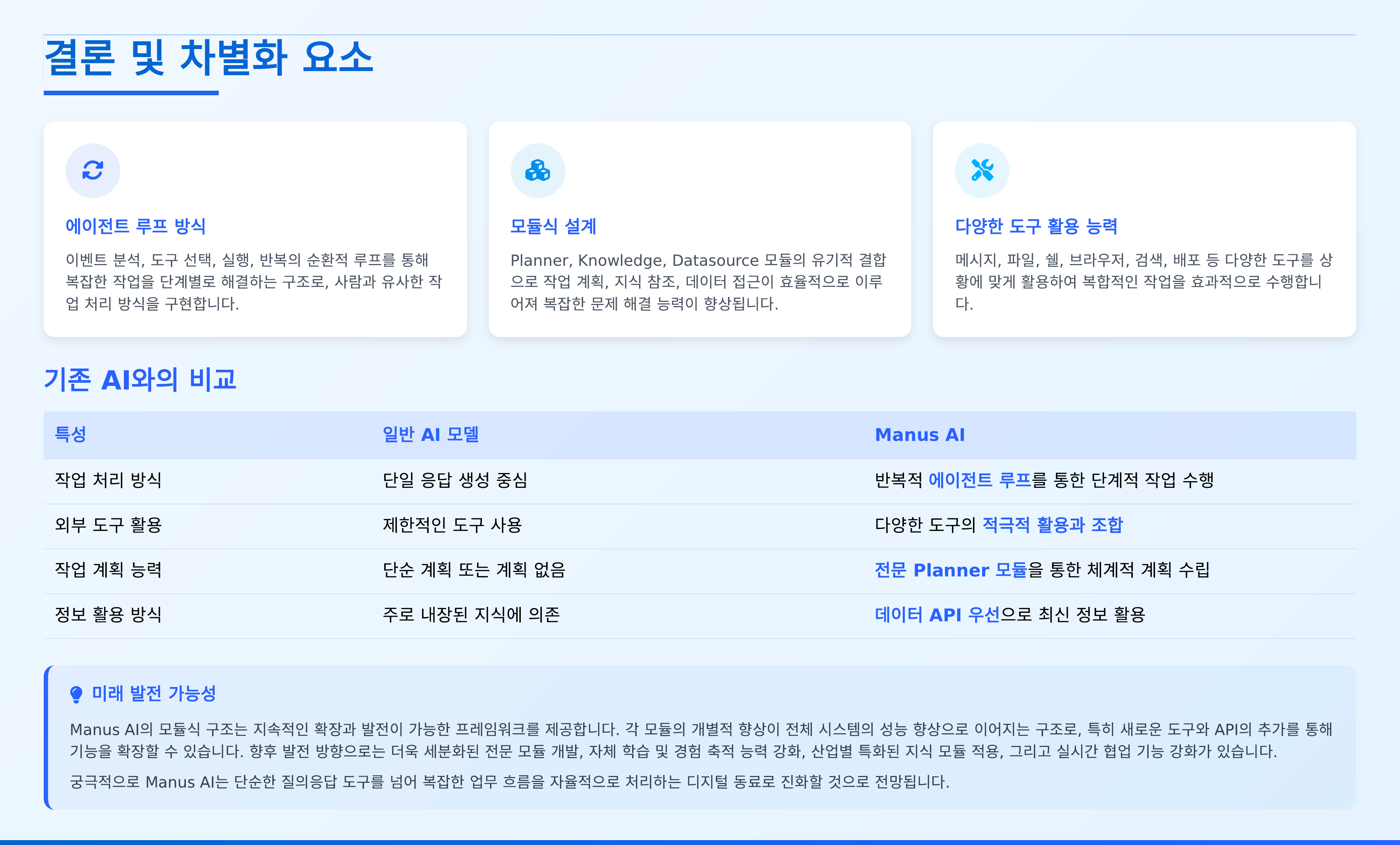
Core Strengths
The system demonstrates three key advantages: the agent loop enables optimal results through iterative improvement, modular design provides flexible and scalable architecture, and diverse tool utilization offers comprehensive task execution capabilities.
Comparison with General LLMs
When compared to general large language models, Manus AI shows distinct differences in working methods, tool utilization, task complexity, and learning capabilities. While general LLMs focus on single response generation with limited tools for simple question-answering and static knowledge, Manus AI employs iterative agent loops with diverse tool combinations for complex task execution and dynamic knowledge updates.
Future Development Potential
The system shows potential for specialized module segmentation through domain-specific module development, self-learning capabilities through experience-based performance improvement, industry-specific specialization to meet particular industry requirements, and enhanced real-time collaboration support for multi-user collaborative environments.
System Architecture Visualization
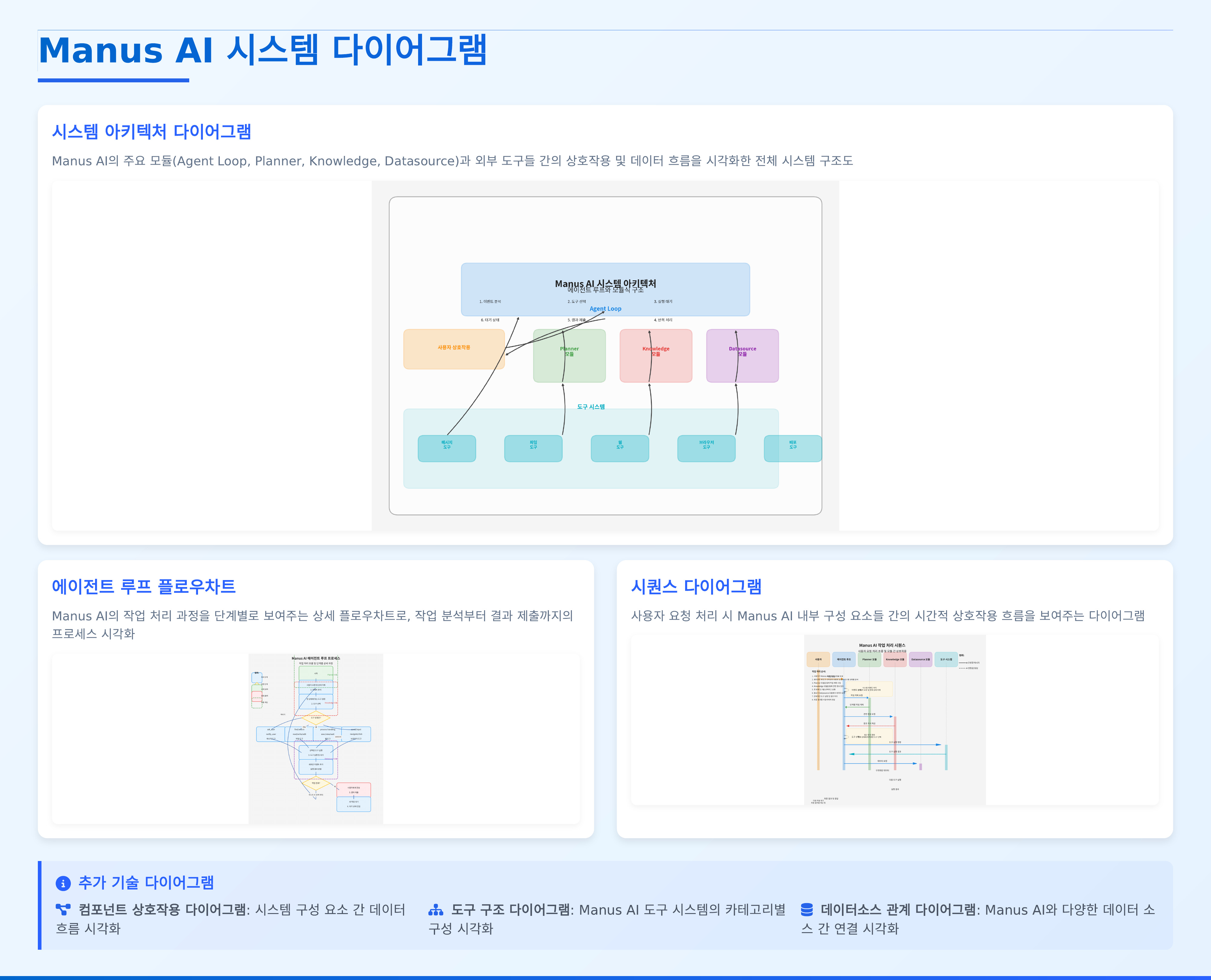
To understand Manus AI’s complex structure, various diagrams are provided including overall architecture showing relationships between system components, agent loop flowcharts illustrating task processing flow, and sequence diagrams depicting temporal interaction patterns.
Component Interaction Analysis
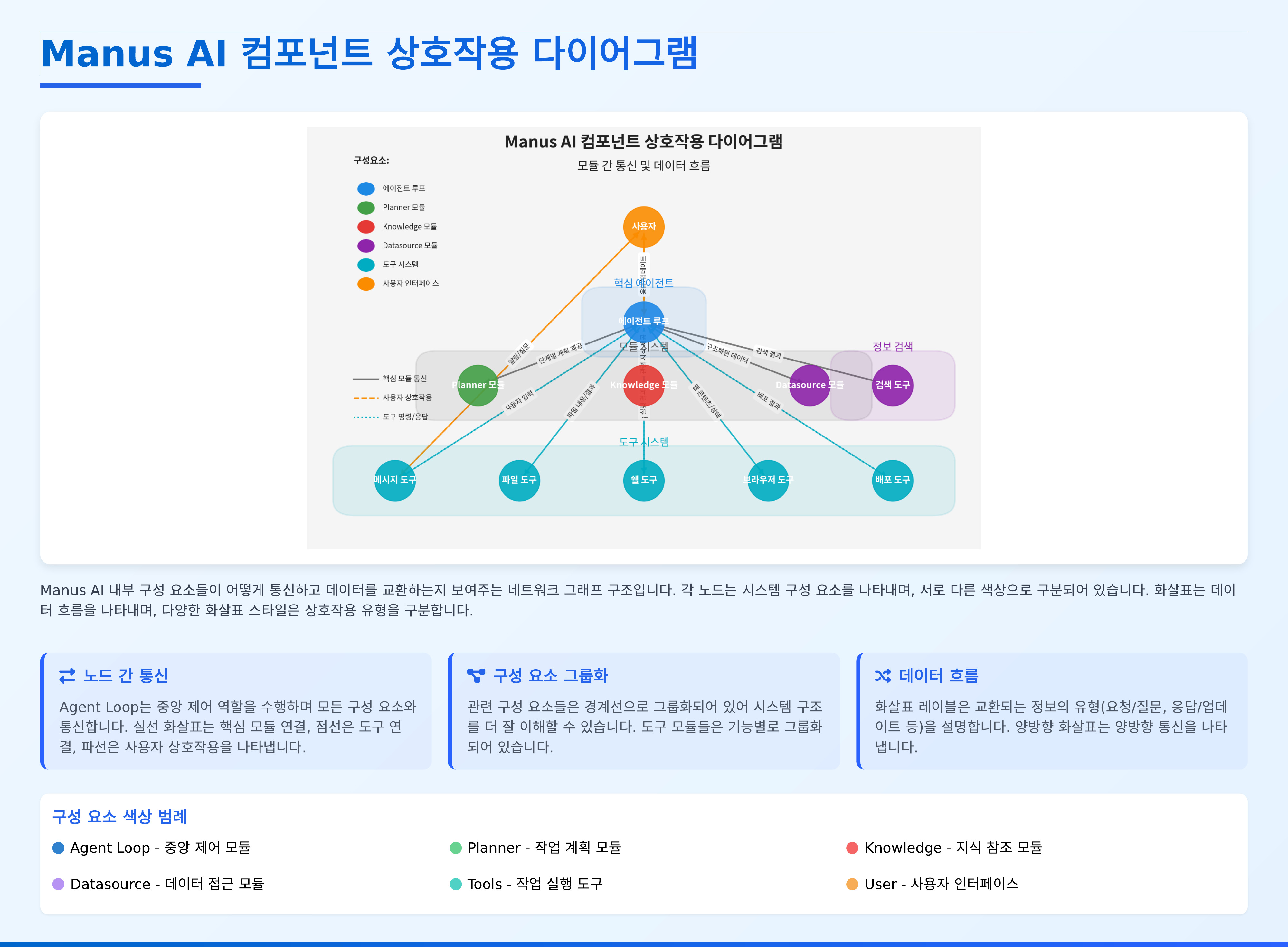
The component interactions represented in network graph form show several characteristics: a centralized structure with the Agent Loop at the center of all components, organic connections between modules including Planner, Knowledge, and Datasource, systematic tool integration with various tools connected systematically, and intuitive user interface supporting straightforward user interactions.
Detailed Flowchart Analysis
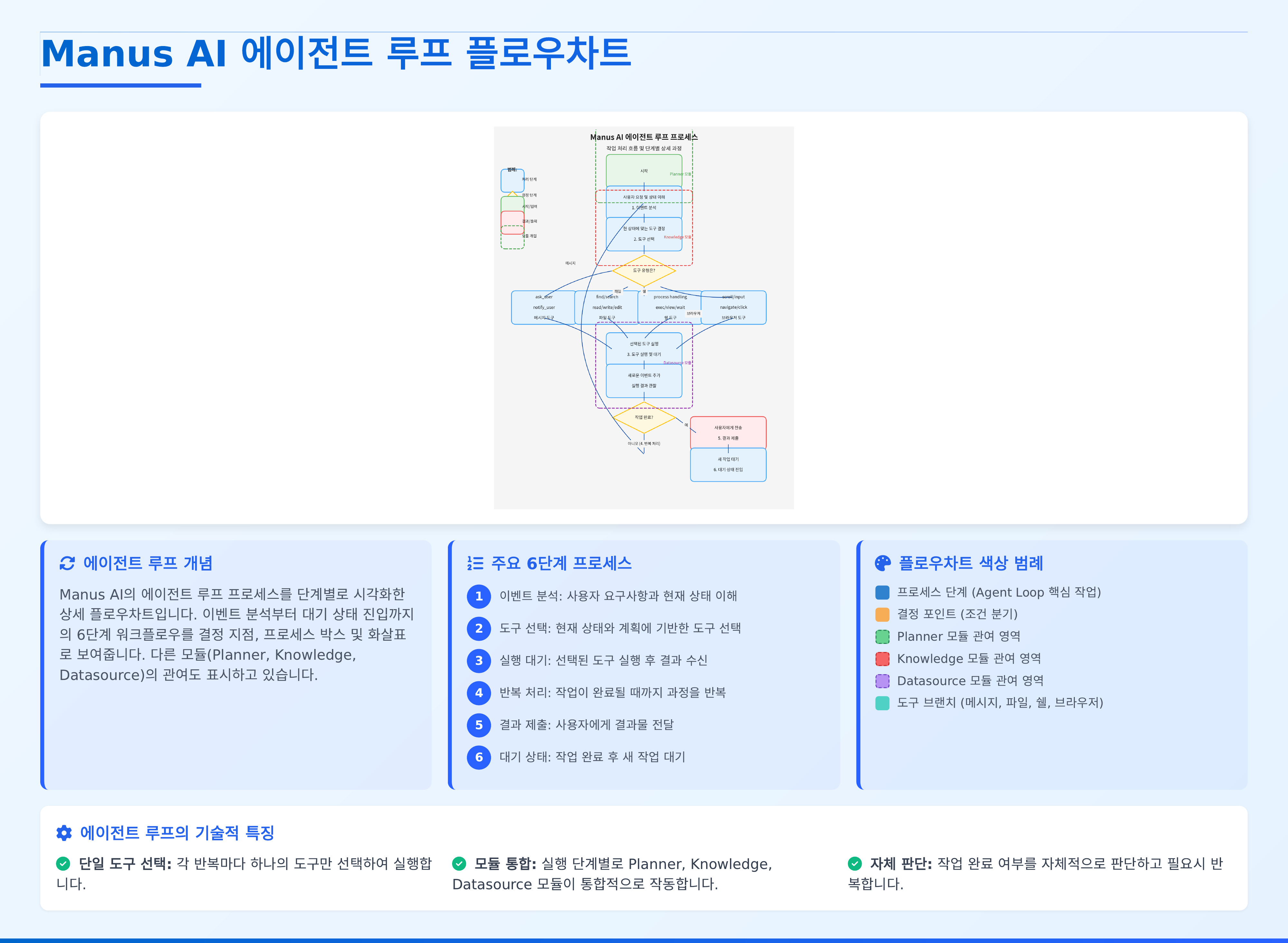
The detailed flowchart reveals technical characteristics including single tool execution where only one tool is executed at a time to ensure stability, module integration through organic cooperation of necessary modules at each step, and autonomous task completion judgment where the system determines task completion independently.
Tool Structure and Proportion Analysis
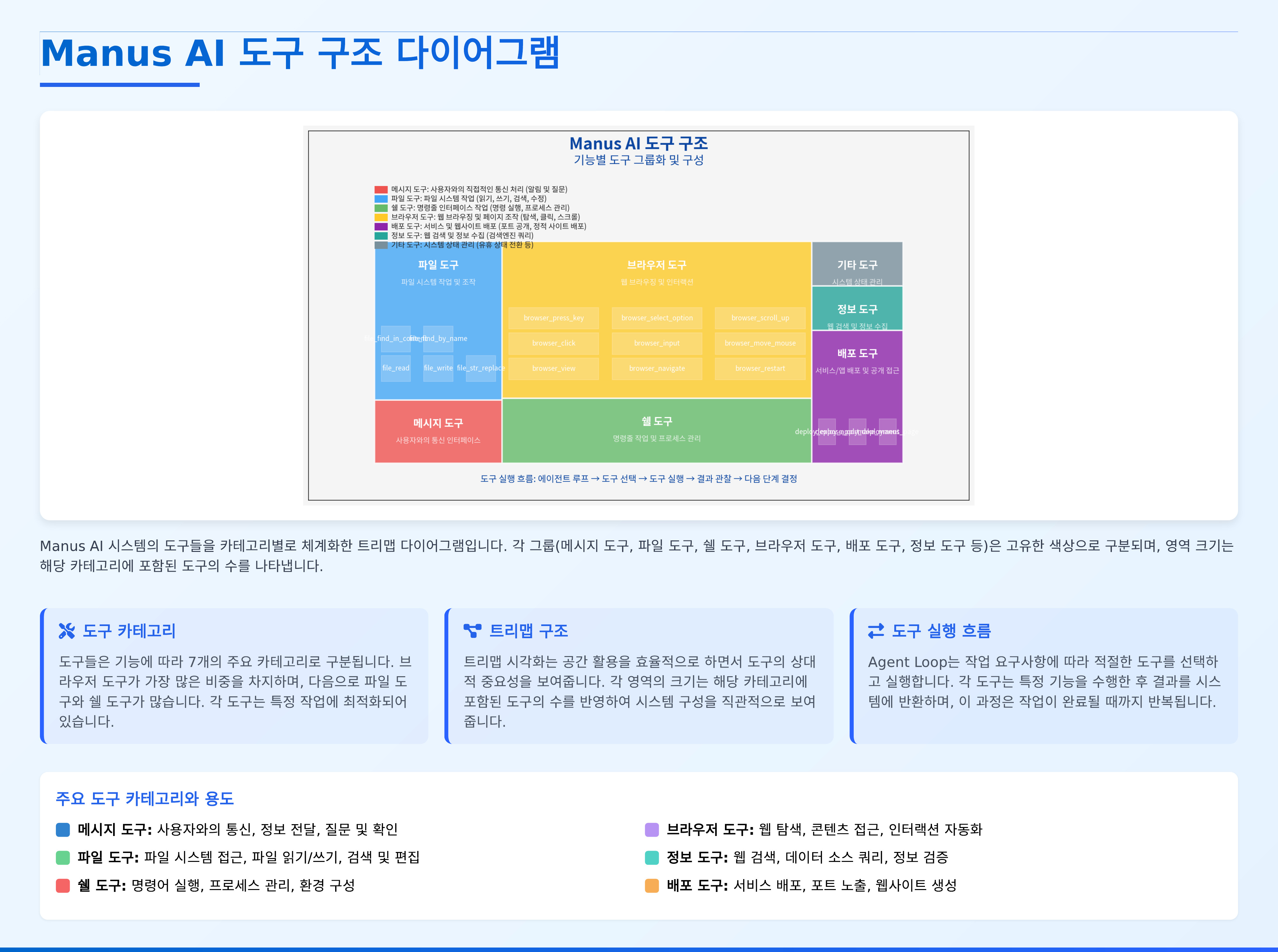
Through treemap analysis, we can confirm that browser tools occupy the largest proportion as core tools, balanced composition with appropriate tool distribution across each category, and execution flow following the Agent Loop’s selection-execution-result repetition pattern as needed.
Sequence Diagram: Temporal Interactions
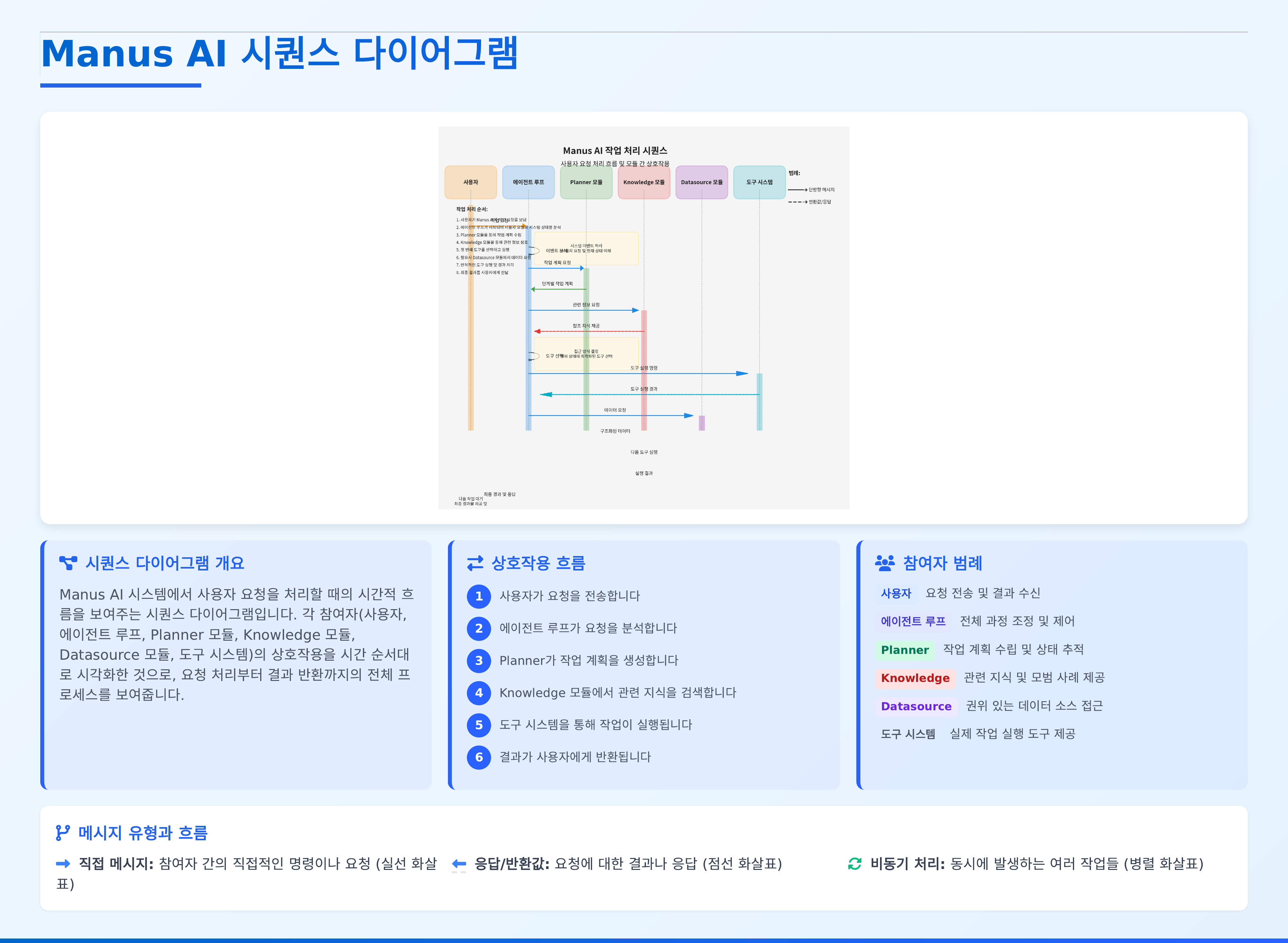
The sequence diagram shows the temporal flow of interactions within the system, involving participants from user to Agent Loop to Planner to Knowledge to Datasource to tool systems. Message types include solid lines for commands, dotted lines for responses, and parallel arrows for asynchronous operations, demonstrating systematic and predictable communication flow interaction patterns.
Conclusion
Manus AI presents an innovative architecture that transcends the limitations of existing AI systems. The iterative improvement through agent loops, scalability through modular design, and systematic utilization of diverse tools represent a new paradigm for AI systems.
Particularly, the ability to decompose complex tasks into manageable steps and process them systematically, going beyond simple question-answering, significantly expands the potential for AI utilization in actual work environments. It will be worth watching what innovations this agent-based AI system will bring to various industrial fields in the future.
This analysis was written as of June 1, 2025, based on publicly available materials about the Manus AI system.